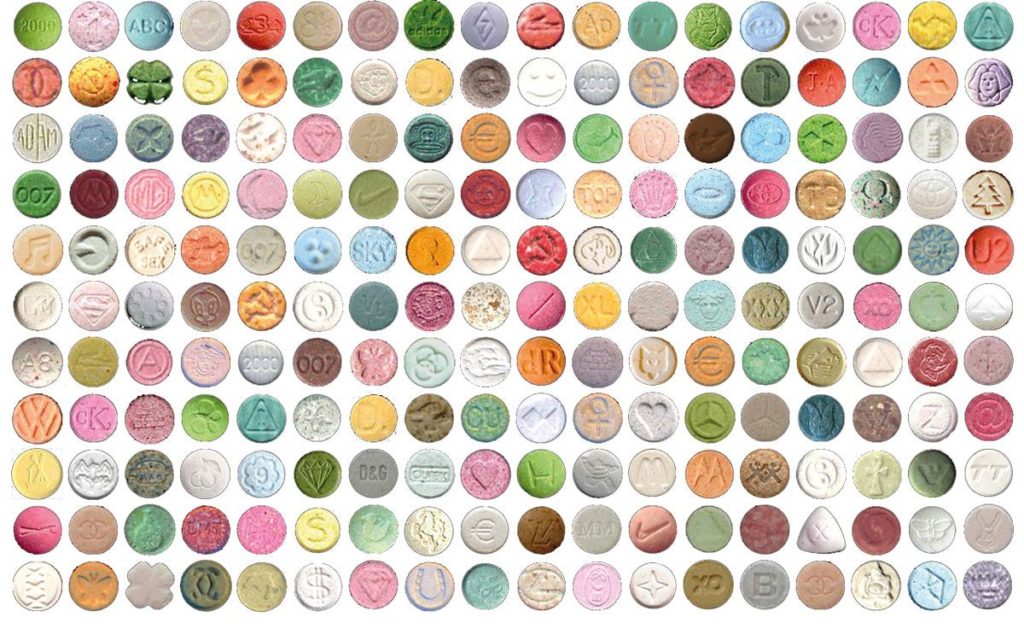Rollin’ and Dustin’: Pathways to Urban Life Styles
A collaboration of the Institute for Community Research (ICR) and the Hartford Animation Institute, Rollin’ and Dustin’ is a traveling exhibit that presents almost 10 years of research findings on the lifestyles and drug use of young people in Hartford, CT. On thirteen large panels, cartoon characters tell the stories of youth and how their lives and communities have been impacted by drugs, particularly MDMA (Ecstasy) and Dust (PCP). The local research was gathered through observation, informal interviews, in-depth interviews, and surveys. The dissemination project and the two studies on which it is based, Pathways to High-Risk Drug Abuse Among Urban Youth (R01DA11421) and Urban Life Styles: Club Drugs, Resource Inequities and Health Risks in Urban Youth (R01DA01010) were funded by the National Institute on Drug Abuse.
About the Panels
The first panel introduces Gina and Rolando, two community researchers who will guide visitors through the exhibit. This panel describes the research projects, the partnership between ICR and the Hartford Animation Institute, and how the panels were created.
Seven characters whose stories run through the exhibit introduce themselves on the second panel. The characters, composites based on data from interviews with many urban youth, represent different paths that youth take in life, and how external conditions, such as education, urban development, drug markets and the criminal justice system affect their lives.
The third panel introduces viewers to ecstasy and dust, including how they arrived and were identified in Hartford between 1994 and 1997. Many gang members were imprisoned during this time. New smaller and informal drug-selling networks emerged that bridged urban and suburban communities, and different parts of the city helping to spread the new drugs.
The fourth panel describes the diffusion of ecstasy among rave partiers in the early 1990s, as well as ecstasy’s cultural presence in the media, music and marketing. By 1997, ecstasy had begun to spread from suburban to urban networks, where individuals used it in clubs, afterhours and more private party settings.
The fifth panel focuses on dust, a smoked, low-cost, home processed drug that often contains PCP, and its consequences for users. Between 1999 and 2001, dust was almost as popular as marijuana among urban youth. It is often used by those who take ecstasy, and in the same places, and thus could be considered a party drug.
After 2001, the United States government passed new laws and increasingly enforced the war on drugs. Also at this time, media attention raised national awareness on ecstasy, as detailed in the sixth panel. Evidence shows that this increased surveillance did not necessarily reduce ecstasy use, but rather diffused it from public settings such as clubs and bars into private spaces such as homes, underground parties, and after hours clubs.
The seventh panel describes dust’s diffusion through Hartford, the northeast, and the United States. By 2002, dust use and its related violent effects were on the rise nationally and particularly in the northeast, causing concern among public health officials.
On the eighth panel, participants describe a variety of effects they experienced when using ecstasy. Between 2003-2005, ecstasy use began to decline nationally but remained a popular drug in Hartford.
The ninth panel presents users’ experiences with dust. Youth use dust to experience a variety of effects, including “getting stuck”, and feeling brave. Research shows that many people do not know what is in dust, including roach spray and PCP, and can experience serious effects such as outbursts of violence.
As described in the tenth panel, our research shows that it is a common to use marijuana and alcohol, though most urban youth do not use harder drugs such as ecstasy and dust – despite having the opportunity to purchase and use these drugs through their friends and other contacts. Even though selling drugs is perceived as an opportunity to make fast money, most study participants declined to do so, saying it wasn’t worth the risk.
The eleventh panel shows the connections between drug use and legal problems for urban youth. The more an individual’s friend uses drugs, the more likely that person will try them. The more drugs used, the more youth are likely to have problems with the criminal justice system
On the twelfth panel, researchers connect drug use to sexual risk taking. Data from the Pathways study showed that the more the drug use the greater the likelihood of unprotected sex, and a Sexually Transmitted Infection (STI).
The thirteenth panel presents final conclusions and recommendations for actions.



